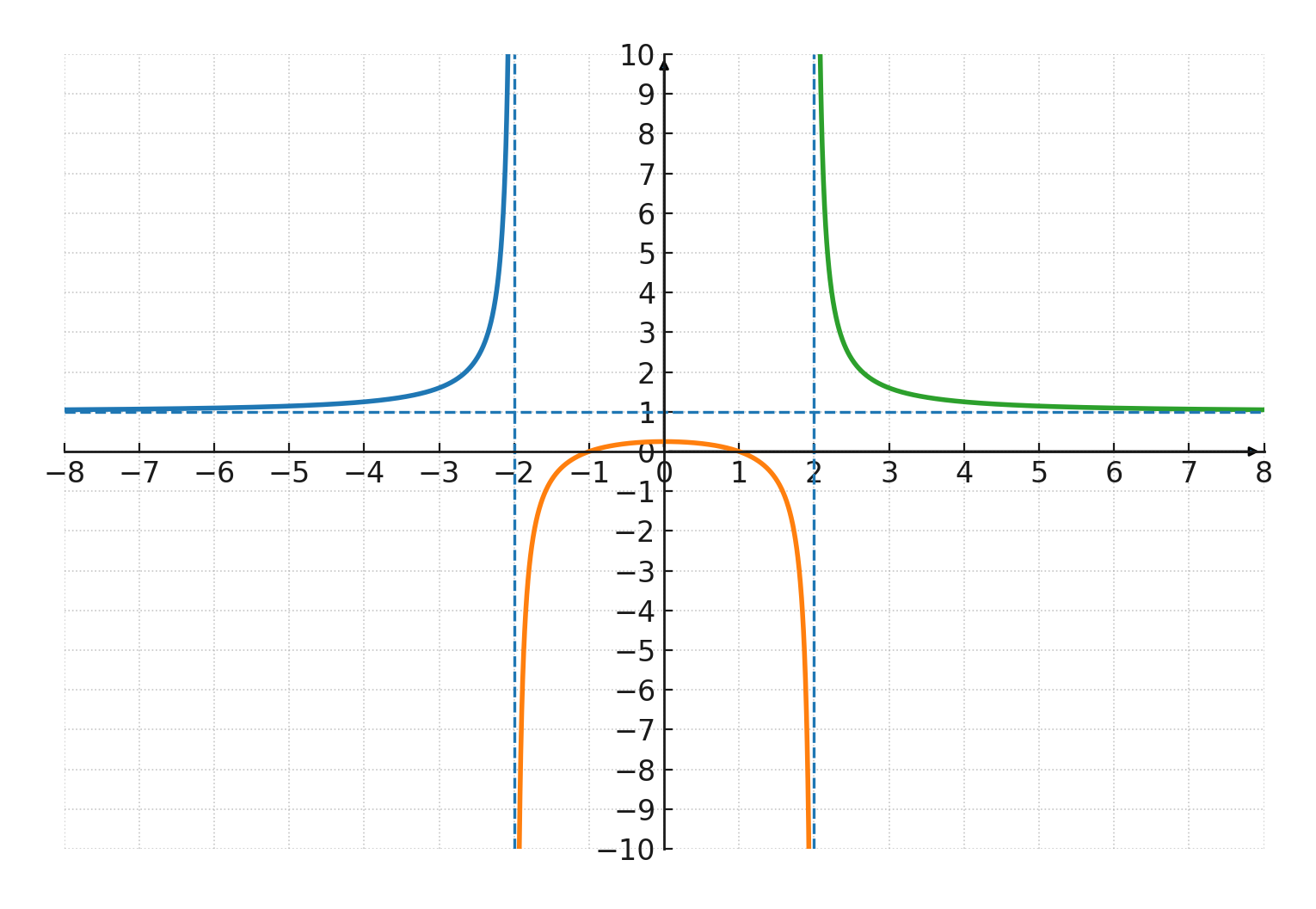Fractional functions
A fractional function is a synonym for a rational function.
That is, a function written as:
\( \large f(x) = \frac{P(x)}{Q(x)} \)
When analyzing a fractional function, one typically proceeds in this order:
First find the domain, then the zeros, then the intersection with the y-axis, and finally the asymptotes.
This gives a coherent description of the graph.
Domain:
The domain is the set of all allowed x-values for the function.
For a fractional function, the domain is all real x where \(\large Q(x)\neq 0 \).
If both numerator and denominator become 0 at the same x (common factor), the point is still excluded from the domain and appears as a hole in the graph.
If \(\large Q(x)=0 \) but \(\large P(x)\neq 0 \), one typically gets a vertical asymptote.
Zeros:
The graph has zeros at the points where the numerator is 0, provided that the denominator is not also 0 at the same point.
Intersection with the y-axis:
Found by inserting \( \large x = 0 \), if this lies within the domain.
Asymptotes:
Vertical asymptotes typically occur at the \( \large x \)-values where the denominator is 0. Horizontal or oblique asymptotes are found by comparing the degrees of numerator and denominator or by polynomial division.
An example is the function:
$$ \large f(x) = \frac{x^2 - 1}{x^2 - 4} $$

Here the numerator is \( \large x^2 - 1 \), which gives zeros at \( \large x = 1 \) and \( \large x = -1 \).
The denominator \( \large x^2 - 4 \) becomes 0 at \( \large x = -2 \) and \( \large x = 2 \), so the function is not defined there.
The domain is therefore all real \( \large x \) except \( \large -2 \) and \( \large 2 \). The graph has vertical asymptotes at \( \large x = -2 \) and \( \large x = 2 \).
Since the degree of numerator and denominator is the same, a horizontal asymptote is obtained at \( \large y = 1 \). The intersection with the y-axis is found at \( \large x = 0 \): \( \large f(0) = \frac{-1}{-4} = \frac{1}{4} \).
With this procedure, one gets an overall view of the behavior of fractional functions.